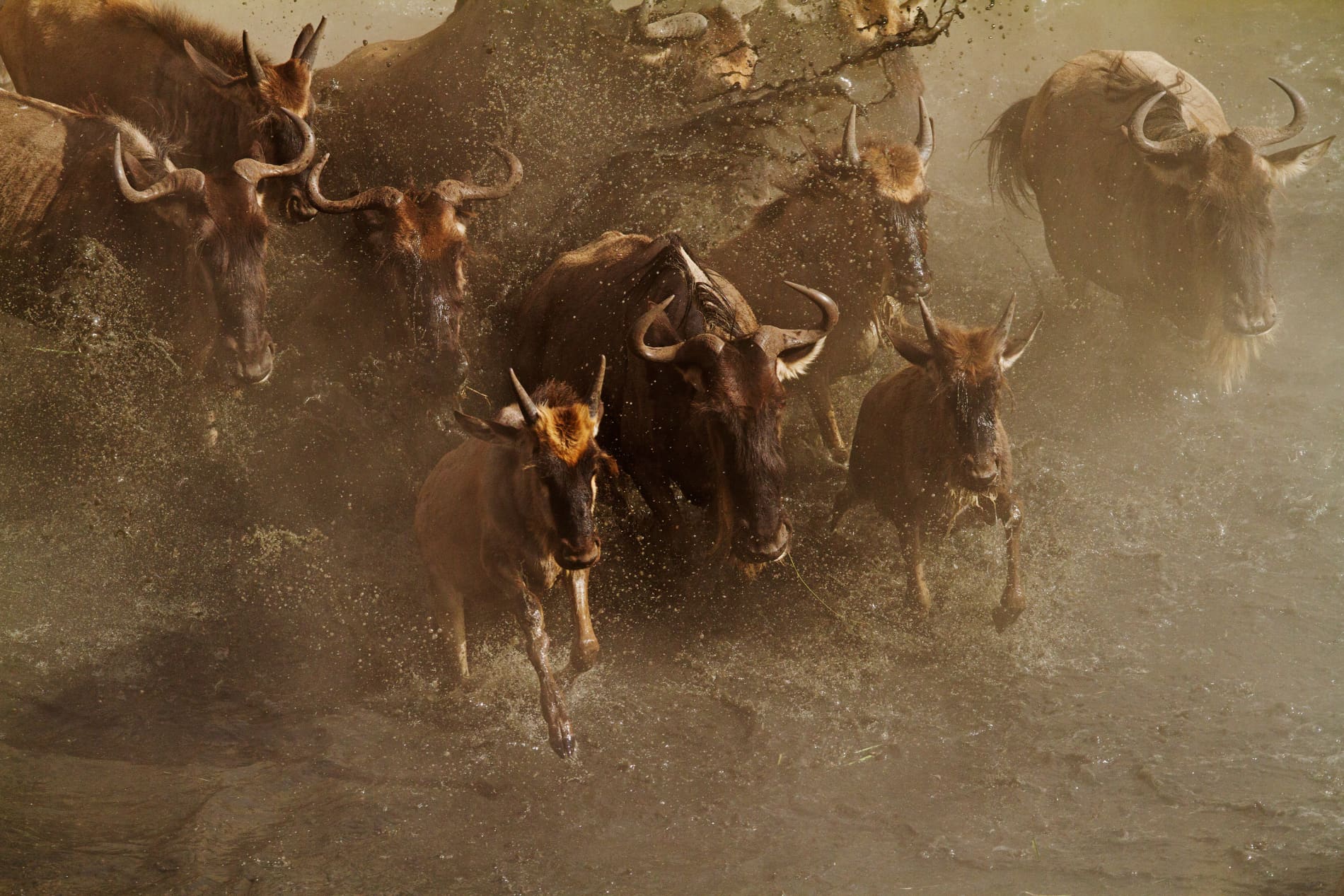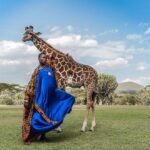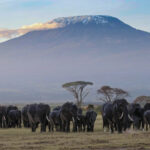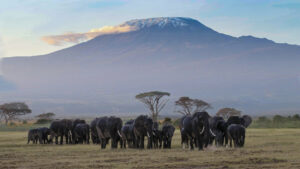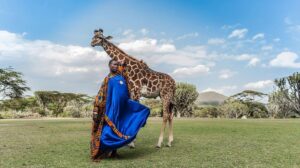In the minds of most people, the migration of animals seems to be a simple matter of crossing a river. However, there is much more to it.
The Great Animal Migration In East Africa
Time is like an arrow and the sun and the moon are like a shuttle, ever rushing, shifting and moving In July and August, the “Great Migration” is always aired by various channels , including CCTV every year, it is a truly adored and majestic wonder of the world! To think, we were safely viewing them on a screen indoors, sheltered from the heat whereas on other side of the earth, over 2 million animals were exerting themselves under the hot sun
What is “East Africa Wildlife Migration”?
According to Google and our friends at AK, they have succinctly described the great migration and the animals included: **Which animals are migrating?** As aforementioned , mainly three kinds of animals take part in this arduous journey, they are the wildebeest , zebra , gazelle. These three groups accumulate and gather in numbers exceeding 2 million . Don’t let your imagination steer you wrong. You may envision more than 2 million animals moving in a disorganized swarm. However, you would be surprised to find that they tend to move in an orderly and polite fashion, migrating in batches.
Although, due to differences in habits and situations, different types of animals will arrive first.
1.It is the zebras who are often in the lead
These guys like to eat the grass tips so that they get the long grass that has not been stained by other herbivores, they are usually the first to start.
2.In the middle is the wildebeest
After the little striped guy is done with the long grass, the short, tender and juicy oat grass is left to the wildebeest. They are the “grassland harvesters”, and will not stop without searching for food.
3.It is the gazelle that is holding the battle
This group of guys enjoy the most. They often have the tender grass that grows again. For carnivores, when this large number of herbivores move, they will of course have to follow, otherwise they will starve to death.
Predators In The Migration
There are three main animals that chase down these herbivorous nomads, their speciality being the wildebeests. Lions , they are the kings of the grasslands and their success rate while cooperatively hunting is much higher than that of other cats. In general, the lioness is mainly responsible for and the best at hunting. It is common for 3 or 4 to join together to capture a young and powerful wildebeest.
Hyenas , they are the prairie hooligans, mainly because their endurance and bite force is amazing. If these herbivores are stared down by a group of hyenas, the only ending is tragedy tragedy.
Leopards , they are agile, and can at times easily catch food that the lion can’t catch up with.
Where is the Migration mainly?
In the minds of most people, the migration of animals seems to be a simple matter of crossing a river. However, there is much more to it. For as long as they have lived, they have been migrating, starting from birth and ending at death. They are true wanderers .
The savannah of East Africa, is very large grassland that is divided into two pieces by the border between Tanzania and Kenya: the smaller half is in Kenya, called the Masai Mara steppe ; the bigger half is in Tanzania, named the Serengeti grasslands . They travel between these two grasslands, circling its entirety ,taking about a year to walk about 6000 kilometers.
Why do they keep walking?
Very simple, just to find food and water!!
In the final analysis, it is all a disaster caused by the areas climate. The East African prairie has a tropical grassland climate. There is no difference between spring, summer, autumn and winter, there is only the dry season and the rainy season. The dry season means no precipitation → no grass grows → no food whereas the rainy season is the most beautiful time, which means abundant rainfall and sufficient food. The precipitation belt on the prairie moves from south to north, starting from the south of Serengeti . !
The animals head all the way north and when the rainy season in Serengeti ends, most will have already headed to the Masai Mara and just caught the tail of the rainy season there. Another reason is behind the migration is ” overgrazing ” . This group of herbivores is too large and eats too much . The grass grows at a rate that is far behind the speed of their consumption. Thus they have to eat in one place before changing to another. If they don’t move, they’d have to wait to starve. (The figure shows the approximate time and location, and the animal migration has slight changes according to the actual precipitation in that year)
What is the animal’s migration process ?
December-March
Location: Southeast of Serengeti Season: Rainy season
At this time, the animals move at the slowest pace, mainly because they are within the rainy season and they don’t have to worry about food or water . Serengeti can fully support the consumption of the large herbivorous family. They will use this time to recuperate for the next long distance journey. Preparing themselves for the trek.
At this time, those who want to see the animals will of course come to Serengeti , Tanzania . You will see that the wildebeests are no longer in a rushed state. Rather , the activity here occurs in the form of small family , the clusters of about 10, they stroll on the grassland, have children, and move freely .
In February and March , the little wildebeests are born together and you can see the newborn baby wildebeests struggling to climb up. This is a compulsory lesson in their lives. As the offspring of a wildebeest in the African Savannah, they must be able to stand up and run within 10 minutes . God knows how many lions are often hidden in the surrounding grass, Leopards and hyenas stare at them. For many small grass-eating animals, birth means death . At this time it is the perfect stage to view the cycle of life, that is , the reproduction of species, the tenacity and fragility of life, the greatness of motherly love, the unity of the family and enemies are identified as well .
April-June
Location: West Serengeti Season: Serengeti is about to enter the dry season
At this time, wildebeests, zebras, and gazelle on the prairie have all ended their leisurely existence in small groups, converging into a large camp of hundreds of thousands or even millions , and officially begin a serious and difficult trek . The purpose of forming groups is to help each other and defend from foreign enemies. They hardly ever are as united as they are on that day . You will even see the huge wildebeest groups mixed with many zebras or gazelles. The usual day to day food competitors seem to live in harmony at this moment. There are no eternal enemies, only eternity. At this time, when you come to Serengeti , Tanzania , you can clearly see a large wildebeest herd, and people with dense phobias enter carefully. Of course, their opponents are not afraid of such a powerful battle in comparison to hunger. After all, it’s now or never! Carnivores follow along the way, without slacking off, as if the animal group was a mobile food truck. The wildebeests walk about 40 kilometers a day, so some who are old, weak and sick are a little overwhelmed. The smart hyenas play a fatigue game with them . After a little relaxation, these wildebeest who may be struggling are chased out of the team and are driven towards a trap where a dozen or so hyenas await to attack. But even so, the young male and female wildebeest still have time to mate . When the team is resting, the male wildebeest will engage with and rush the young and beautiful female wildebeest together. Many baby wildebeests will be born next year to make up for the sacrifices of members of the wildebeest dynasty.
July-September
Location: Masai Mara grassland Season: Dry season*
At this point, most of the large migratory troops have arrived in Kenya’s Masai Mara , the world-class spectacle legendary – ” Crossing the Mara River is their annual life-and-death catastrophe . The wildebeests are faced with the large mouths of the Nile crocodiles , the hyena ‘s desperate pursuit, and the lion ‘s ambush. But the wildebeests were already prepared!
Vast herds tend to go head to head with this natural selection process, powerful male wildebeest begin and end the procession. Their process of crossing the river is organized and disciplined , making it a perfect escape! Each time, the leading wildebeests are extremely responsible and dedicated . They first scout for the enemy on the shore to see if there is an ambush of lions, e.t.c… awaiting, before they get the courage to jump down and into the river to begin their escape from the crocodiles. For them, going ashore while facing the actual jaws of death, is a no brainer despite the success rate at times being half! This is because those who have crossed the river will also give great encouragement to the large forces watching at the back and ensure the continuity of the species.
After that, the “Great Animal Migration” has officially started! Tens of thousands of wildebeests and zebras will be embraced by the Mara River! Young and middle-aged ones will choose a conspicuous location to cross the river first to attract the attention of the crocodiles. This is to protect the old ,weak and sick positioned at the middle of the troops then finish off the crossing with the young spry wildebeest, this reduces a lot casualties.
Every summer, the Mara River is always packed with off-road vehicles, and people from all over the world will gather here to watch this event . The river is fast and the animals are fierce. Accidentally, at times the river becomes a bright red of blood . It is valuable that the herbivores are united, regardless of species, and that they cover each other. The wildebeests, having crossed the river safely, can enjoy the comfort of the Masai Mara grassland. They enjoy the fresh and juicy grass there, eat and reacquaint themselves with the Masai Mara.
The “crossing at the river” continues for three months, going forward endlessly . However, they often end up drying out the delicious food on the grassland because the Masai Mara is too small, it is one tenth of Serengeti . The food on the Masai Mara cannot support the consumption of more than two million animals, so they will stay here for a few months and set off towards the south of Serengeti once more.
October-December
Location: Northeast Serengeti Season: Serengeti’s rainy season is coming
At this time, the grass of Masai Mara is mostly almost completely eaten up. The return of the migrants to Serengeti in Tanzania means that this massive migration is coming to an end and Serengeti is also about to usher in the rainy season. Physically and mentally fatigued, they can finally relax their pace a little. But as far as the wildebeests are concerned, only 30% of the lucky ones can return to home, and with them, there are hundreds of thousands of lives that are being bred in the belly’s of the female wildebeests.
The journey continues, endlessly



